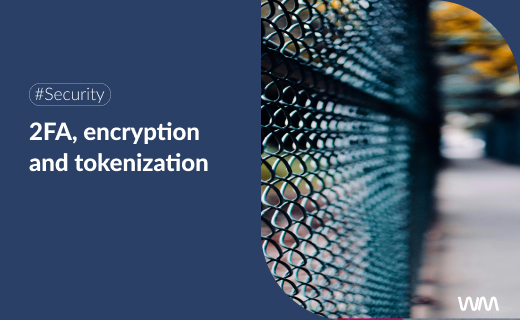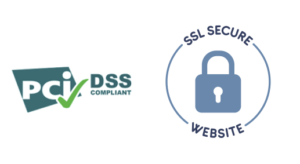Two-Factor Authentication (2FA)
What is Two-Factor Authentication?
Two-Factor Authentication (2FA) is a security measure that requires two forms of identification to verify a user’s identity before allowing access to an account or completing a transaction. The first form of identification is usually something the user knows (like a password), and the second is something the user has (like a mobile phone) or something the user is (like a fingerprint). This approach provides an additional layer of security that can prevent unauthorized access even if the user’s password has been compromised.
How 2FA Works
- Credential Entry: The user enters their username and password.
- Additional Verification: After entering the credentials, a second form of verification is required, such as a code sent via SMS, a notification in an authentication app, or a fingerprint.
- Access: Only after verifying both forms of identification does the user gain access to the account or the transaction is processed.
There are several methods of 2FA that can be implemented:
- SMS Codes: A verification code is sent to the user’s mobile phone, which must be entered to complete access.
- Authentication Apps: Apps like Google Authenticator or Authy generate temporary verification codes that the user must enter.
- Push Notifications: A notification is sent to the user’s device, which must be approved to complete the authentication.
- Biometrics: Uses unique physical characteristics of the user, such as fingerprints, facial recognition, or iris scanning.
Benefits of 2FA
- Increased Security: Adds an extra layer of protection, making unauthorized access more difficult even if the password is compromised.
- Fraud Reduction: Significantly decreases the chances of fraud and unauthorized access.
- User Trust: Improves user trust by ensuring their accounts are better protected.
- Regulatory Compliance: Helps comply with security regulations that require robust authentication, such as the PSD2 Directive in Europe.
Challenges of 2FA
- Convenience: May be less convenient for users due to the additional steps.
- Compatibility: Not all systems or devices are compatible with all forms of 2FA.
- Device Dependence: Loss or theft of the device used for 2FA can complicate access.
- Implementation Costs: May require additional investments in infrastructure and technical support.
Use Cases of 2FA
2FA is widely used in various industries to protect sensitive information and financial transactions:
- Online Banking: Protects bank accounts and financial transactions.
- E-commerce: Secures customer accounts and payment transactions.
- Enterprise Applications: Protects access to critical applications and corporate data.
- Social Networks: Protects user accounts from unauthorized access.
Encryption
What is Encryption?
Encryption is a process that converts information into an unreadable code to protect it from unauthorized access. Only those with the decryption key can read and access the original information. Encryption is fundamental to protecting the confidentiality and integrity of data during its transmission and storage.
How Encryption Works
- Key Generation: Two keys are generated, one public and one private, in asymmetric encryption systems, or a single key in symmetric systems.
- Data Encryption: Data is converted into a coded format using the encryption key.
- Secure Transmission: Encrypted data is transmitted securely, preventing unauthorized third parties from reading it.
- Decryption: The recipient uses the corresponding key to decrypt the data and access the original information.
Types of Encryption
- Symmetric Encryption: Uses the same key to encrypt and decrypt data. It is faster but requires that the key be kept secure.
- AES (Advanced Encryption Standard): A widely used encryption standard known for its security and efficiency.
- DES (Data Encryption Standard): An older algorithm now considered insecure for many applications.
- Asymmetric Encryption: Uses a pair of keys (public and private). It is more secure for data transmission but slower compared to symmetric encryption.
- RSA (Rivest-Shamir-Adleman): A commonly used algorithm in asymmetric encryption.
- ECC (Elliptic Curve Cryptography): Provides the same level of security as RSA with smaller, more efficient keys.
Benefits of Encryption
- Data Protection: Ensures that data is unreadable to anyone without the appropriate key.
- Regulatory Compliance: Helps comply with data security regulations and standards, such as GDPR, HIPAA, and PCI-DSS.
- Customer Trust: Increases customer trust by protecting their personal and financial information.
- Data Integrity: Ensures that data is not altered during transmission.
Challenges of Encryption
- Key Management: Protecting and managing encryption keys can be complex and requires careful handling.
- Performance: Encryption and decryption can affect system performance due to the resources required.
- Compatibility: Ensuring compatibility between different encryption systems can be challenging.
- Cost: Implementing robust encryption solutions can involve significant costs in hardware and software.
Implementing Encryption
To effectively implement encryption in an online payment gateway, several key steps should be followed:
- Needs Assessment: Determine the data that needs to be encrypted and the required level of security.
- Algorithm Selection: Choose the most suitable encryption algorithms for specific needs.
- Key Management: Implement a secure and efficient key management system.
- Integration: Integrate encryption at all points of data entry and exit.
- Monitoring and Maintenance: Continuously monitor the encryption system and perform regular maintenance to ensure its effectiveness.
Use Cases of Encryption
Encryption can be used in a variety of contexts to protect sensitive data:
- Secure Communications: Protects electronic communications, such as emails and instant messaging.
- Financial Transactions: Secures online payment transactions and protects credit card information.
- Data Storage: Protects data stored on servers, databases, and storage devices.
- Virtual Private Networks (VPNs): Protects network connections and ensures the privacy of transmitted data.
Tokenization
What is Tokenization?
Tokenization is the process of substituting sensitive data with unique identifiers, known as tokens, that have no value outside the specific context for which they were created. These tokens can be used in place of the original data to perform transactions, thus reducing the risk of exposing sensitive data.
How Tokenization Works
- Token Generation: When sensitive data, such as a credit card number, is entered, a unique token is generated.
- Secure Storage: The original data is securely stored in a data vault, while the token is used for the transaction.
- Token Usage: The token is used instead of sensitive data during the transaction, preventing the original data from being exposed.
- Detokenization: Only the authorized system can revert the token to the original data when necessary.
Benefits of Tokenization
- Risk Reduction: Minimizes the risk of exposing sensitive data in case of a security breach.
- Regulatory Compliance: Helps comply with security regulations, such as PCI-DSS, by reducing the scope of sensitive data that needs to be protected.
- Flexibility: Tokens can be used in multiple transactions without revealing the original data.
- Data Theft Protection: Even if tokens are intercepted, they cannot be used to access the original information.
Challenges of Tokenization
- Implementation: Can be complex to implement and requires careful integration with existing systems.
- Token Management: Requires secure and efficient management of tokens to ensure their effectiveness.
- Cost: Implementing a tokenization system can involve additional costs in technology and administration.
- Latency: Token generation and validation can introduce latency in transaction processing.
Implementing Tokenization
To implement tokenization in an online payment gateway, the following steps should be considered:
- Needs Assessment: Identify the data that needs to be tokenized and the security requirements.
- Platform Selection: Choose a tokenization platform that integrates well with existing systems.
- Data Vault Configuration: Establish a secure data vault to store the original information.
- Token Generation and Management: Implement a system for generating and managing tokens.
- Integration: Ensure that tokenization is integrated at all points of data processing.
- Monitoring and Updating: Continuously monitor the system and perform updates as necessary.
Use Cases of Tokenization
Tokenization is widely used in various industries to protect sensitive data:
- E-commerce: Protects credit card information during online transactions.
- Healthcare: Protects electronic medical records and other sensitive patient information.
- Banking: Secures financial transactions and protects customer data.
- Telecommunications: Protects customer information and transactions on mobile service platforms.
Conclusions
In summary, security technologies such as Two-Factor Authentication (2FA), Encryption, and Tokenization are essential for protecting online transactions and users’ financial data. Each of these technologies offers an additional layer of protection that, when implemented together, can create a much more secure transaction environment. Adopting these measures not only protects consumers but also enhances trust in online payment platforms and helps comply with security regulations. The combination of 2FA, encryption, and tokenization provides a comprehensive approach to data security, making online payment gateways more secure and reliable.
If you want to integrate an online payment gateway for your business and ensure the security of your online operations, we have what you need. Contact us.






